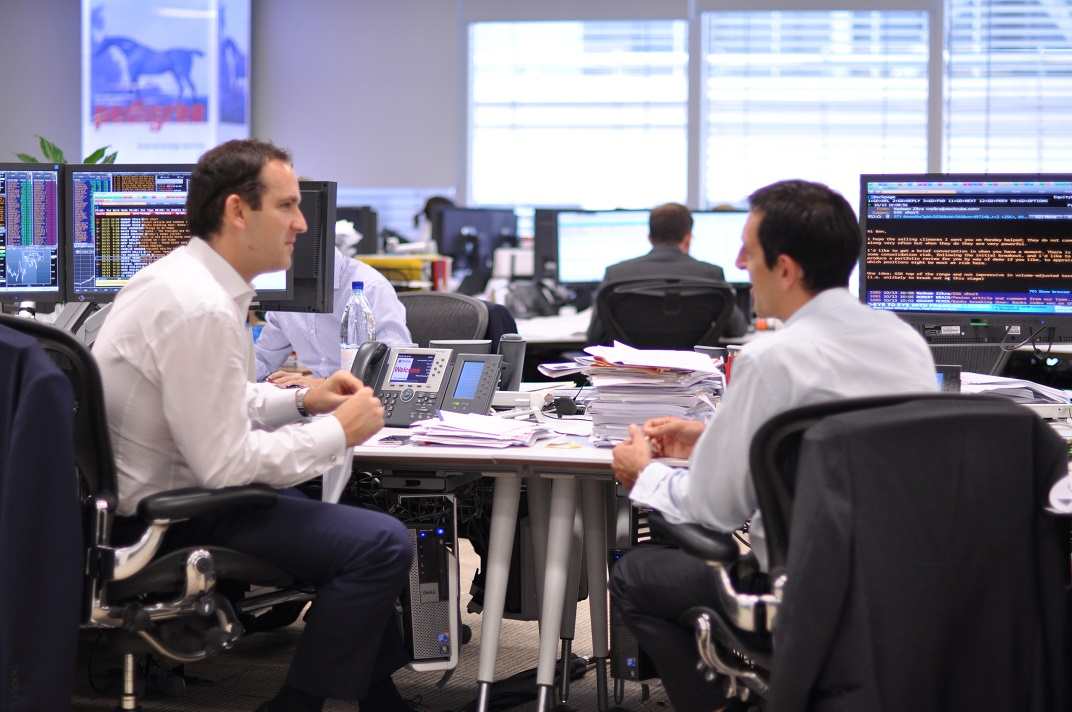Fear and greed have been powerful motivators over the past few years, with investors gripped in turn by panic about the health of the global economy and optimism that central banks have done enough to promote growth. From concerns about the burden of government debt in the western world, to the US ‘fiscal cliff’ leading up to the start of 2013, whichever way the pendulum has swung, investors have followed.
The past few months, however, have seen the steady emergence of a different trend. We first saw it at the start of 2012, when stocks were pricing almost entirely on market sentiment. At that time, the importance of economic newsflow far outweighed the detail of individual stocks. Since then, share pricing correlations have steadily fallen and the dominant macro-economic themes that have driven investors to buy or sell over the past few years are no longer overshadowing stock-specific drivers to quite the same degree.

Source: Bloomberg, CBOE S&P500 Implied Correlation Index (indicating the expected average correlation of price returns of the stocks that comprise the S&P500 Index), as at 7 August 2013
A market where prices move in tandem, such as we saw in the period prior to 2012, limits the opportunities for stock-pickers like us to generate active returns. The lower the correlation in share price movements, the greater the opportunity to find stocks capable of generating higher or lower returns than the market average. This gives room for independent stock characteristics to play a bigger role, providing more opportunities to generate profits from long and short stock-picking ideas.
It can be something of a challenge to overcome some investors’ ingrained preference for bond funds, particularly for those who lost money in the post-Lehman Brothers crash (15 September, incidentally, marks the five-year anniversary of when the company filed for bankruptcy). Bond markets have come under abnormal and sustained pressure in recent months, however, as markets consider the implications of the US Federal Reserve’s plan to start pulling back on its $85 billion per month bond-buying programme.
This has left investors looking for other options for their money in a low growth, low interest rate world. Absolute return funds, which are generally considered to sit somewhere between a bond fund and an equities fund in terms of potential risk are, in our opinion, an attractive halfway house.
For our Absolute Return strategies, the long and short books are equally important and, as always, the key is getting the right mix of holdings. It is an intrinsic part of our management style to be very proactive in scaling positions on the fund. The portfolio is divided into our core long book and a tactical short book, which allows us to move quickly when responding to market events, or when looking to exploit what is a diverse investment universe. Our willingness to utilise this flexibility to adjust the net and gross position has enabled us to generate consistent positive returns, while helping to preserve capital and minimise volatility.
January 2013 marked the first time in some years that we moved the gross exposure above 100%, a statement of confidence that it was a sensible time to put investors’ capital to work. At the time we took some material long positions to more defensive areas of the market that displayed very safe and secure dividend-paying characteristics, such as HSBC and Vodafone. HSBC in particular seemed very well positioned, with a recent dividend increase suggesting that future earnings might be quite good.
Financials has been quite a busy area for us in 2013, across both long and short books, given the sector’s sensitivity to economic data and monetary policy. Central banks have taken extraordinary measures in the past couple of years, directing the risk-free rate to help restore confidence in the economy and to make other asset classes more attractive. While we would not ordinarily choose to go long in miners, a number of resources stocks also seem unduly out of favour, given management changes and improvements in capital expenditure.
The fall in share pricing correlations hopefully marks an end to what has been a lingering hangover from the financial crisis, at least for the time being. In a perfectly efficient market, all investment decisions would be based on rational and measurable factors, with share price volatility driven primarily by the fundamentals of individual companies. Markets certainly aren’t perfect, but in this environment, we believe that an actively managed long/short strategy with an absolute return focus can play an important role for cautious investors.
Opinion Column by Henderson Global Investors

